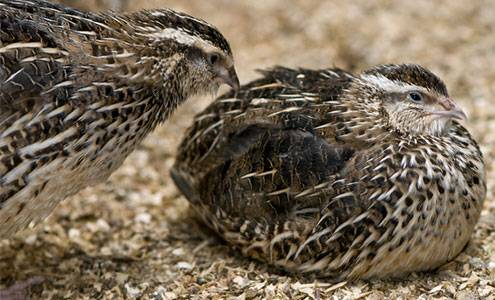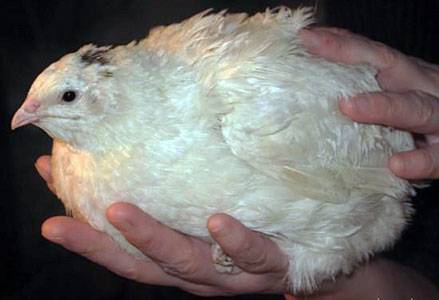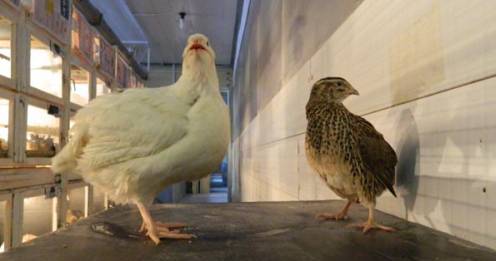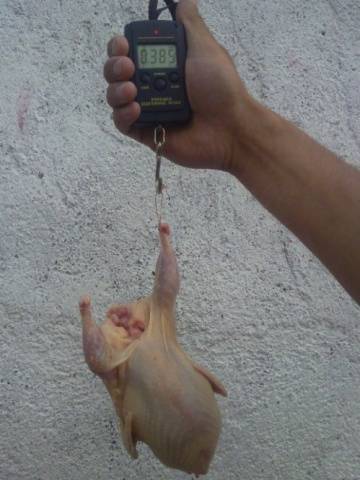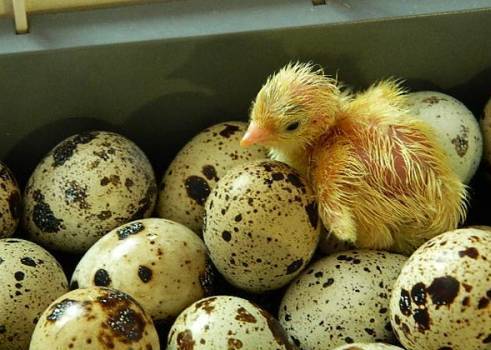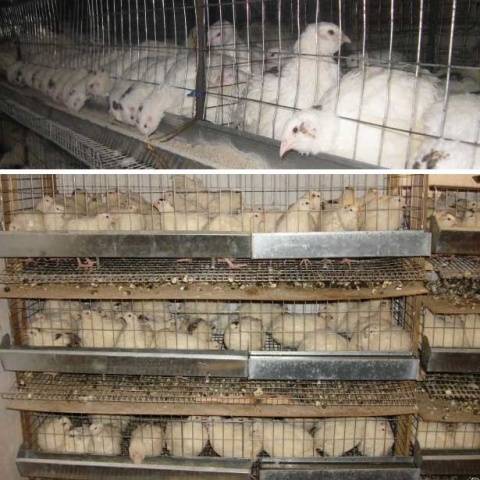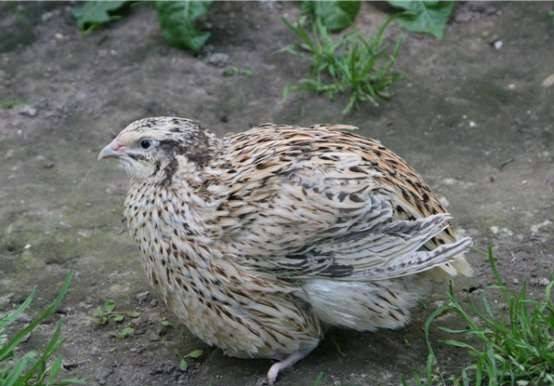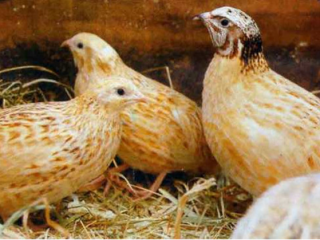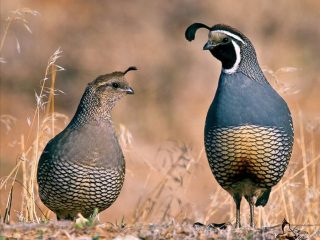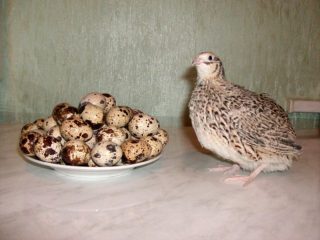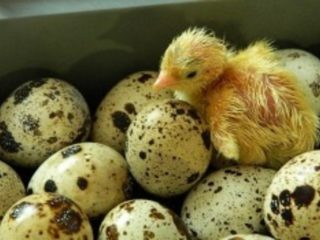Content
If you are going to breed quails exclusively for meat, without focusing on their egg production, it is better to choose one of the two breeds of broiler quails that exist today: Pharaoh and texas white.
Both breeds of broiler quails are characterized by rapid weight gain and are “relatives”, since the Japanese quail is at the origins of any breed of domesticated quail. Although there are many species of wild quail in nature, these species have no productive value.
Pharaoh quail
Bred in the USA to produce meat products with a large carcass weight. In the photo without the scale of the pharaoh it is impossible to distinguish from Japanese, Estonian or any other "wild" color quail.
Advertising claims that the weight of individual representatives of the breed can reach 0.5 kg. But, most likely, this is an overweight bird, which was specially fed before slaughter. The weight of a normal quail capable of laying eggs does not exceed 350 g. However, this is almost 2 times more than the weight of the progenitor breed - the Japanese quail.
Productive characteristics
Quails become sexually mature at the age of one and a half months. Egg production is up to 280 eggs per year with an egg weight of 12 - 17 g.
For breeding, you should buy quails no older than 1.5 months.
The weight of an adult quail is about 250 g, quail - up to 350 g.
The advantages of the pharaoh are the endurance of the quail and the fertilization of eggs 90%.
The downsides are whimsical content and demanding temperature conditions.
Quail breed Texas white
The confusion arising today with the names makes it very difficult for beginners to choose a breed.
They can sometimes be called American albino broilers or white albinos, although quails are not actually albinos. Most likely, this is done for the sake of selling a "new unique breed."
The breed received its name from the state in which it was bred using other quail breeds that can quickly gain weight. In the breeding of the Texas pharaoh was used english white quail... It was from him that the Texan received white plumage.
Texas pharaohs
The size of the Texas quail is significantly larger than non-broiler breeds. Even those that themselves do not differ too small in size.
Estonian quail larger than its Japanese progenitor, but even he looks small against the background of the white pharaoh.
Description of the breed
The main feature of the thoroughbredness of the white pharaoh is its plumage, in which only individual black feathers are allowed. Moreover, the fewer such feathers, the better.
A white feather is preferred by Texans, as the skin underneath is an attractive yellowish color. It is this circumstance that determines the requirement for the breed standard: as little color feather as possible. The beak is light, sometimes with a dark tip.
The weight of the female Texan is about 470 g, the male - 350 g. Some individuals may even weigh 550 g, but these are obese specimens, suitable only for slaughter. The weight of the finished Texan carcass is 250 - 350 g, depending on whether this carcass belonged to the male or female.
The advantage of the Texas pharaoh over the Japanese quail is obvious.
The quail of the white pharaoh begins to lay eggs from 2 months. Egg production of Texas quail is up to 200 eggs per year. When fed with broiler feed, eggs can weigh over 20 g. But these eggs can only be used as food. Often they contain 2 yolks and they are not suitable for incubation. A hatching egg of a Texas quail weighs 10-11g.
Naturally, the consumption of feed for growing the white pharaoh is higher, since broiler breeds need an increased feed rate for a quick set of muscle mass. But not as large as it might seem, given their large size. The low feed consumption in relation to body weight is due to the phlegmatic nature of Texas quails. The phrase “nerves are useful for the figure,” which is usually used, meaning that individuals with increased excitability, expend energy on the work of the nervous system, is inapplicable to the Texas pharaohs.
Although Texans are picky about food, they are unpretentious in keeping.
On the plus side, Texans have the lowest feed conversion rates compared to other quail breeds.
The disadvantages include low hatchability (up to 80%).
Incubation and rearing of chickens of the white pharaoh
Due to the phlegmatic disposition of the Texas pharaohs, one male needs to identify two females, while in other breeds 3-4 quails are added to the male. But Texans with more quails will have poor egg fertility.
Quails for breeding should be selected at the age of 2-10 months. During collection, the eggs must be stored at a temperature of + 12 ° C, immediately before placing them in the incubator, the eggs must be warmed up to + 18 ° C by spreading them out in the room.
Incubation lasts 17-18 days. After hatching, the quails are allowed time to dry and placed in a brooder with a temperature of 28-30 ° C. The Texas White breed was bred in America for industrial breeding, so Texan quails are better suited for specialized feed for young animals than one made on their own.
The specifics of keeping Texas broilers
If quails are kept in cage batteries, then the correct ratio between the number of quails and the area of the cage must be observed. With too high a density of livestock, quails begin to conflict with each other, which leads to fights and bloody wounds. Infection penetrates into open wounds, and as a result, all the quail population may die.
For 30 young Texans, a cage 0.9 x 0.4 m in area and 30 cm high is needed.
You can keep quails and "free" in the barn. Just on the floor. True, in this case, there will certainly be quail shoots or raids of hunters (cats, dogs, foxes, ferrets, weasels) on tasty and defenseless birds.
For quails of any type of maintenance, for normal egg production and development, lighting is necessary, but it should be dim, since bright light excites the nervous system of the quails and they start fights.
When growing, chicks can be kept in a cardboard container, choosing boxes depending on the size. Since chicks need movement at first, the floor area for one swaddle should be 50 cm². You can use wood shavings, hay or straw on the bedding.The first is not very desirable, since dry shavings slide and get lost in the corners on smooth cardboard. As a result, the quails remain on the slippery cardboard and can damage the still fragile ligaments.
Comparison of quail breeds Texas and Estonians
Warning to those wishing to buy quail of the Texas White breed
Against the background of the high demand for white pharaohs, advertisements for the sale of eggs and breeding quail of the Tanyushkin Broiler Pharaoh and the White Giant near Moscow appeared on the Internet. Moreover, there are many ads, but there are no reviews from the owners.
The productive characteristics of these breeds are no different from the characteristics of the Texas white, but the hatching egg costs one and a half times more than the "Texas" one.
Both "breeds" are sold by the same person. Naturally, these quails were not registered as breeds. And it is impossible for such a short time, which has passed since the first Texas whites appeared on the Russian market, to develop two whole new breeds.
Perhaps this is a claim to breeding new breeds, and if the experiment is successful, then over time, domestic broiler quail breeds will appear. Much more often, such artisanal experiments end in complete failure.
If you want to experiment, then you can take quails of these lines. If you want a guaranteed result, it is better to buy a tribal white pharaoh in a proven farm.
Another breed or broiler line Manchu golden quail, bred in France, or "it's all a hoax huckster" is a golden phoenix.
Phoenix golden
This quail copies Manchu golden in almost everything, with the exception of weight. The weight of phoenix quails reaches 400 g, and the weight of males is up to 300 g.
Testimonials from Texas white owners
Conclusion
Of all broiler quail breeds, Texas white is the most economical and profitable option, despite its disadvantages in the form of whimsicality and low egg fertility.
